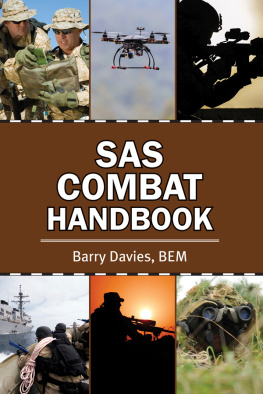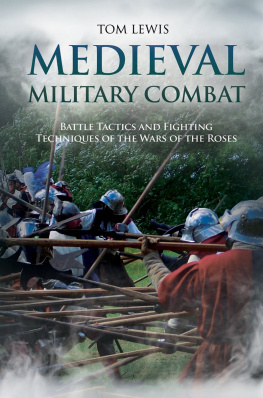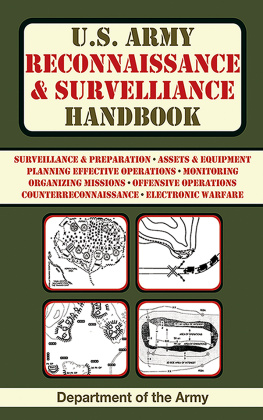Copyright 2015 by Barry Davies
All rights reserved. No part of this book may be reproduced in any manner without the express written consent of the publisher, except in the case of brief excerpts in critical reviews or articles. All inquiries should be addressed to Skyhorse Publishing, 307 West 36th Street, 11th Floor, New York, NY 10018.
Skyhorse Publishing books may be purchased in bulk at special discounts for sales promotion, corporate gifts, fund-raising, or educational purposes. Special editions can also be created to specifications. For details, contact the Special Sales Department, Skyhorse Publishing, 307 West 36th Street, 11th Floor, New York, NY 10018 or .
Skyhorse and Skyhorse Publishing are registered trademarks of Skyhorse Publishing, Inc., a Delaware corporation.
Visit our website at www.skyhorsepublishing.com.
10 9 8 7 6 5 4 3 2 1
Library of Congress Cataloging-in-Publication Data is available on file.
Cover photos: Thinkstock
Print ISBN: 978-1-63220-295-6
Ebook ISBN: 978-1-63220-866-8
Printed in China
To Jock Logan my best friend while serving in the SAS
TABLE OF CONTENTS
It is a sad thing to say but beneath the soil of most countries on this planet there rests the body of an SAS soldier. On average, three SAS soldiers die every year; on a bad year it can be as high as twenty. The SAS is not a large Regiment, two hundred active men at best, and the death of an individual soldier is a great loss. It is an unfortunate part of SAS life that many soldiers do die, some while in training while others during operations. One only has to take a look in the SAS graveyard at Saint Martins Church in Hereford or the Clock Tower in Credenhill to see the cost. Here lie (in many cases only named) many young men, good men, men full of life and promise, dead before their time. It is not that the regiment is careless or Gung-Ho; on the contrary, it is because these men dared to face foe and adversity head onthey Dared to Win. The ode below is a fitting verse.
* * *
It is not the critic who counts, not the one who points out how the strong man stumbled, or how the doer of deeds might have done better. The credit belongs to the man who is actually in the arena, whose face is marred with sweat and dust and blood, who strives valiantly; who knows the enthusiasms, the great devotions, and spends himself in a worthy cause; who, if he wins, knows the triumph of high achievement; and who, if he fails, at least fails while daring greatly, so that his place shall never be with those cold and timid souls who knew neither victory nor defeat.
INTRODUCTION
W riting a book on SAS tactics and operational skills is not as clear cut as one would think, and in truth it would take volumes. Their role within the British Army and Security Services makes instruction on an SAS skill prohibited, and it would be wrong of me to do so. However, it is clear to see how many of these skills came about by highlighting them in the various military operations the SAS have undertaken since their conception in 1941. Therefore, in writing this book, I have selected a range of SAS operations covering most of the Regiments skills. Some have been widely publicized while others remain untold; none presents a danger to any serving member of the SAS, yet they make for avid reading. With an understanding of the nature of the task confronting the SAS when presented with an operation, it is easier to comprehend the tactics and skills illustrated in the summary. For the most part, the stories within this book come from a direct source where the actual soldiers involved have given their own accounts. Readers might like to see the bibliography at the end of this book and in particular read the SAS War Diary (if you can find one).
The SAS have been asked to do many things, and in the past, most would have made headline news. Nevertheless, recent years have seen a marked decline in the amount of information seeping out of the Regiment. Today secrecy is rigidly enforced. Now, unless operationally required, no SAS soldier is allowed to take a camera with him on operations. All serving Sabre Squadron soldiers (known as Blades) are required to sign a document, which is little more than a vow of silencefor life.
The stories collected within this book have taken place, but the accuracy will always be argued by those who actually took part. The truth can only be told by those who were actually thereeven then it is only their version. There is only one truththe SAS will always be at the cutting edge of warfare, developing its own tactics and operational skills as required.
Some seventy years or more after its inception, news of Special Air Service (SAS) operations still holds a fascination for so many, both at home and abroad. Their daring, their swiftness and bravery are unrivaled in the fight against terrorism. Just two hundred men rigorously selected, highly trained, and with a spirit to dare. They will go, willingly, deep behind enemy lines, take on incredible odds, and risk their lives to rescue others. There have been many books written on the SAS, most telling of individual events in its history. This book aims to describe how the tactics and operational skills help its members win their battles.
In order to explain how SAS tactics and operations work, it is much easier to relate to their role at a given time in their short history. These roles covered operations in the jungle, desert, and cities; but the roles were not dictated by terrain alone and rather by many other factors such as the enemy they faced, the indigenous people, and most importantly, what was expected of the SAS. For example, the London Iranian Embassy siege required tactics far different from those of SAS soldiers operating in Northern Ireland or Afghanistan. To this end I have tried to depict a real operational scenario and illustrate how the SAS adapted their tactics to best meet the operational demands.
For every SAS soldier, the basic war-fighter skills are taught during initial training upon induction into the army. It is only when a soldier volunteers for the SAS and successfully passes selection that he learns a new set of skills. Then, as the years pass and the soldiers assigned to an SAS Squadron or Cell, he learns the more specialized skills that set the SAS apart from others.
In order to appreciate the actions of the SAS, one must first recognize what makes it so special. 22 Special Air Service is the designation given to the present SAS regular regiment. The Regiment is now based in Credenhill, Herefordshire, and consists of around two hundred men divided among four Sabre Squadrons: A, B, D, and G. In addition to these, the Regiment also supports the Training Squadron, 18 Signals Regiment, and HQ squadron. There are a number of smaller units such as Operations Capability, Demolitions, Parachute Section, Boat Section, Army Air Corp Section, and a host of subunits responsible for the daily running and administration of such a large organization. In total the new camp at Credenhill houses almost a thousand service men and women.
Many reading this book will wonder where SAS soldiers come from. What makes an SAS soldier? Are they born killers? Having known many of the men mentioned in this book, I can put your mind at rest: for the most part they are all normal. True some of the SAS soldiers I have known and worked with have told me tales of their background and in some cases they are far from normal.
Take Nobby for example. At the age of seven he came home from school to find that his mother and father had moved without telling him. He walked the streets not knowing what to do; eventually he went to live with his aunt. Despite being abandoned by his parents, he entered the ranks of the SAS and remained one of the most stable persons I have ever known.

















